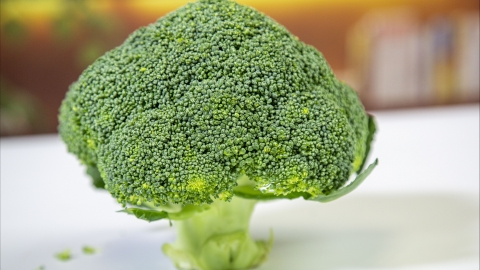What are the 5 most effective foods and vegetable combinations for lowering blood lipids?
Generally speaking, there is no specific claim regarding the five most effective foods or vegetable combinations for lowering blood lipids. However, combinations such as olive oil with broccoli, whole wheat bread with Chinese cabbage, oats with blueberries, carrots with apples, and spinach with nuts may be used as supportive dietary strategies to help reduce blood lipid levels. The detailed explanations are as follows:

1. Olive Oil with Broccoli
Olive oil is rich in unsaturated fatty acids, which can help lower cholesterol levels in the blood while increasing HDL-C levels. It also contains abundant antioxidant substances, such as polyphenols, which can protect the cardiovascular system from oxidative stress. Broccoli is rich in vitamin K, which helps control blood glucose levels and subsequently aids in regulating blood lipids. The fiber in broccoli also helps promote cholesterol excretion.
2. Whole Wheat Bread with Chinese Cabbage
Whole wheat bread is made from whole wheat flour and retains most of the nutrients found in the bran and germ, including fiber, vitamins, and minerals. The dietary fiber in whole wheat bread helps lower cholesterol levels and improve gut health. Chinese cabbage is rich in vitamin E, a powerful antioxidant that protects cell membranes from oxidative damage, thus supporting cardiovascular health. Additionally, the fiber in Chinese cabbage also aids in cholesterol elimination.
3. Oats with Blueberries
Oats contain beta-glucan, a soluble fiber that effectively lowers LDL cholesterol while providing sustained energy. Other nutrients in oats, such as protein, B vitamins, and minerals, also contribute to overall health. Blueberries are rich in anthocyanins, which reduce inflammation and protect heart health. Moreover, the fiber in blueberries helps regulate blood lipids. Combining oats with fresh blueberries makes a convenient and nutritious breakfast or snack.
4. Carrots with Apples
Carrots contain abundant beta-carotene, which can be converted into vitamin A and helps improve vision and skin health. The fiber in carrots also contributes to lowering cholesterol. Apples are rich in pectin, which binds to and removes cholesterol from the intestines, thus lowering blood lipid levels. The polyphenols in apples also have antioxidant properties that protect blood vessels from damage. Carrots and apples can be juiced or made into salads, offering both flavor and health benefits.
5. Spinach with Nuts
Spinach is rich in chlorophyll, fiber, potassium, magnesium, and various vitamins such as vitamin C and vitamin K. These nutrients help lower blood pressure, reduce the risk of atherosclerosis, and indirectly lower blood lipids. Nuts such as walnuts and almonds are rich in unsaturated fatty acids, fiber, and plant sterols, which help reduce LDL cholesterol while providing healthy fats. Combining spinach with nuts increases dietary fiber intake.
In addition to dietary adjustments, it is also important to incorporate appropriate physical activity and maintain healthy lifestyle habits. When adjusting your diet, please make reasonable combinations based on your individual constitution and under the guidance of a healthcare professional.




